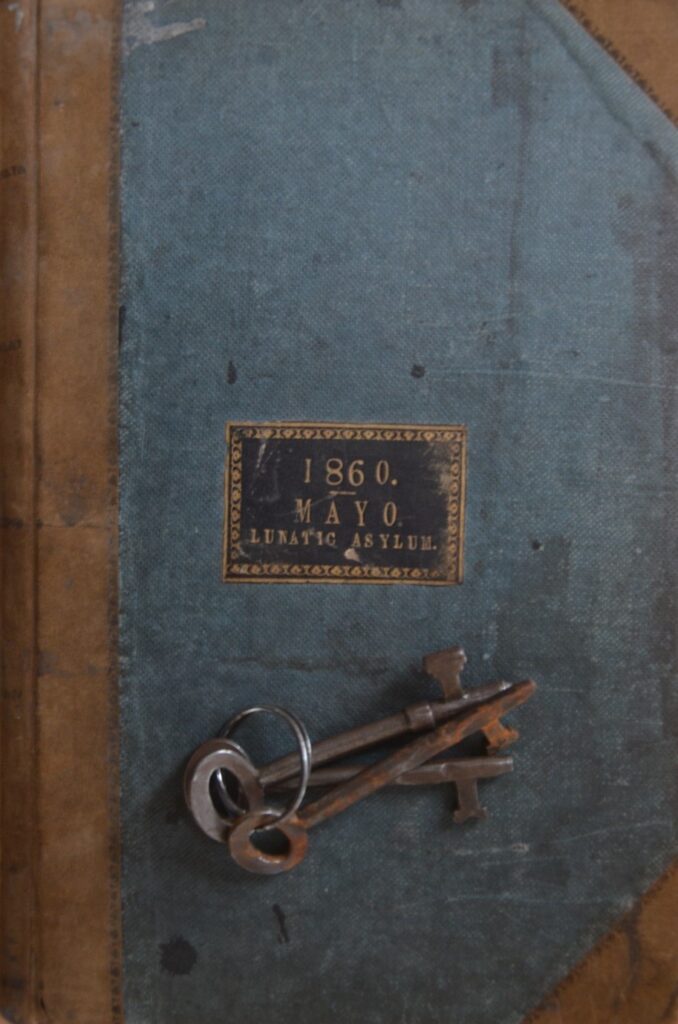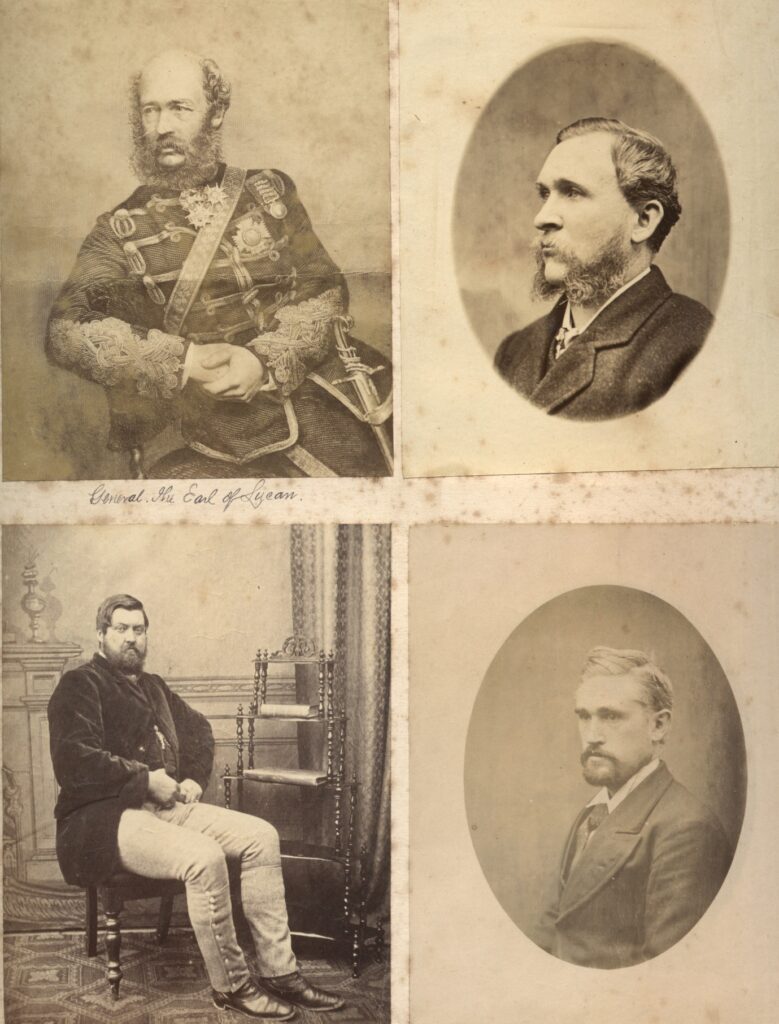Language and Terminology


St Marys Heritage Society have access to the records of Castlebar Lunatic Asylum from 1860. They are the original and the only records available to us to help us piece together the happenings since the primitive care of the mentally prior to 1866.

Early in the seventeenth century saw the Grand Juries came into force and are mentioned on numerous occasions in the early records. They were a group of citizens empowered by law to conduct legal proceedings, investigate criminal conduct, and determine whether criminal charges should be brought against members of the public at that time.
They were presided over by senior figures of the British establishment lords, knights Bart the short for baronet and noblemen. Some Irishmen with names such as O Grady and Walsh were also members, obviously from the noblemen class They are also mentioned on numerous occasions in the forthcoming records of the Castlebar Lunatic Asylum.

They were succeeded by the Local Authorities following the introduction of the Local Government Act of 1898. Mayo County Council which replaced the Grand Jury had their inaugural meeting on the 22nd of April 1899.
Others continually mentioned in the early records are Commissioners of Lunacy or Lunacy Commissions which were bodies established to oversee Asylums and the welfare of residents now called today the Mental Health Commission. Summer Assizes – Courts are referred to and were held around the county towns and presided over by visiting judges from the higher courts in London. Another term cropping up is Arrears of Cess Courts and those appeared to have a tax collection function.
The Connaught Lunatic Asylum Ballinasloe 1833 Serving Co Mayo.

In the early days, a tall building stood at the corner of the road approximately 50 meters from the now Canthal Duffy’s garage on the new roundabout. The area was known locally as Mad House Hill but was known officially as the Bridewell. This building was used to accommodate mentally ill patients for a short time prior to their transfer to Ballinasloe lunatic asylum. It acted as a place of safety for the mentally ill. Ballinasloe Lunatic Asylum was first opened in 1833 with a total accommodation of 150 for the entire province of Connaught described in the language used at the time as stretching down to the extreme north of Leitrim to the Mullet and the isles of the west of it, to the tip of Achill and the isles of Louisburgh and Kilkelly with a population of approximately one million four hundred thousand people at that time. The remote districts were more than 140 miles from Ballinasloe with very poor roads primitive type carts with solid wooden wheels two feet in diameter on which the patients would have been transferred to Ballinasloe.
The Mayo Lunatic Asylum

It was evident to the powers that be that the building of a Lunatic Asylum to accommodate our Mayo patients was a dire necessity and the first shot was fired by the Grand Jury at the spring assizes on the 30th May 1860 with the decision to build a Lunatic Asylum.
Their view was that it was expedient to have a lunatic asylum for the county, provided it can be done upon the terms to meet the circumstances of their finances. They set up a committee of the Grand Jury to cooperate with them for the purpose of building a Lunatic Asylum. It consisted of the following noblemen and gentlemen from the committee for the Lunatic Asylum. The Earl of Lucan, lord john Browne, Sir R A O Donell Bart, Sir Samuel O Malley Bart, Colonel Knox, Colonel Gore, Sir R L Blosse Bart, Captain Palmer MP, VOC Blake, Anthony o Malley, Charles Strickland, John E Walsh, F R O Grady. J.T. Browne Foreman signed off on the proceedings
They considered the following sites one of the Mail Coach Road to Dublin which I believe to be the road towards Swinford, a second at Black fort of the Newport Road and the third, land near Sion Hill were approved by the committee as sites suitable to build a lunatic asylum. They met the Earl of Lucan to check if his lordship as they referred to would dispose of any of those sites for the erection of a lunatic asylum for the county of Mayo and if so what are the rates of purchase. It would appear from the minute that Lucan having expressed his interest in giving a site stated that at the moment s that he was unprepared to give a definite answer but without loss of time as he out it would communicate with the committee through the secretary of the Grand Jury,

At a subsequent meeting held on the 20th July 1860 in the presence of Lord John Browne in the Chair Sir R L Blosse Bart, Sir RA O Donell Bart, Sir Samuel O Malley Bart, Anthony O Malley, Colonel Gore, Charles Strickland, John C Walsh it was agreed that a guy called Mr Larminie to be appointed secretary. He was directed to communicate with the government stating the resolution of the Grand Jury in favour of a lunatic Asylum for Castlebar and requesting one of the Commissioners of lunacy in Ireland to be sent down to aid with his advice on the choice of a site. The secretary was directed to write to the government saying that it was in order to employ Mr Wilkinson as architect for the building of the Mayo Lunatic Asylum. Mr Wilkinson was a renowned architect who designed health care facilities such as Workhouses and Lunatic Asylums across the British Isles.
Grand Jury meetings continued during 1861 deciding that the site of the Lunatic Asylum is on the lands near the County Gaol and that the Asylum is built to accommodate 250 patients. A lot of the groundwork appears to have been done leading up to the appointment of a contractor.
At a crucial meeting on 18th February 1862, the contract for the building of the Lunatic asylum was awarded to Mr Andrew Egan the lowest tender in the sum of £ 18,349.39 on Mr Wilkinson’s Architects recommendations and subject to him providing the required securities to the Board of Control.

The meeting of the 18th November 1862 saw Mr Wilkinson again laying before the committee the following tenders for the building of the boundary wall around the lands of the Lunatic Asylum.
Edward Cannon at a rate of 6/10 per cubic yard.
Thomas Cooley at a rate of 7/10 per cubic yard.
James Clarke at a rate of 7/4 per cubic yard.
He recommended that the tender of Edward Cannon being the lowest tender should be accepted as was accepted by the Commissioners of Control.
The Meeting on Tuesday the 25th of November 1862 saw a dramatic turn of events with the committee having before them the letter of the commissioners of control dated the 15th November 1862 recommending that the contract be taken from Mr Egan and that he be paid for the actual work done according to the schedule of prices and Mr Wilkinson’s valuations and that if possible, arrangements be made to purchase from Mr Egan the materials subject to Mr Wilkinson’s valuations. There is no reference in the accounts as to why this decision was taken. The committee also recommend that an advertisement be issued for a contractor to complete the work. The secretary is directed to forward a copy of this resolution and Mr Egan’s letters to the Commissioners of Control. Mr Egan was to be given a copy of the resolution.

At the next meeting on the 16th February 1863 the new tender of Mr George Mayer’s to complete the lunatic Asylum for county Mayo for the sum of £ 20,150.00 was accepted provided that as they insisted, he gives the amplest and solvent security for the due execution of same and that he covenants to complete same within a period of twelve months from the date of the contract. Work done to the value of £2213.00 is to be paid to Mr Egan. A clear and definite decision by the Grand Jury you would have to say.
The meetings commencing on the 4th of August 1864 and onwards would indicate that the building was been kitted out getting ready for the reception of patients from Ballinasloe Lunatic asylum. Gaslighting was recommended and installed on the recommendations of Mr Wilkinson, Mr Larimine was directed to write to the governors of Ballinasloe Asylum to ascertain the annual cost of lighting that Asylum with gas, the number of gas lights in use, This discussion went on and a letter from Dr Eaton Resident Physician of Ballinasloe Lunatic Asylum stated that the number of gas lights there amounted to 120 and that a similar number would be sufficient to light the Castlebar Lunatic Asylum.
The meeting of the 4th March 1865 started to address the staffing of the Castlebar lunatic Asylum with the resolution of the committee to appoint a Resident Physician. The committee made provision that the physician appointed will have been previously in charge of a Lunatic Asylum as a permanent Resident Physician. The first appointment was with Dr Burton.
To facilitate the opening of the Castlebar lunatic Asylum the Lord Lieutenant of Ireland on 28th March 1865 in what was called at the time in Privy Council appointed the first Board of Governors to the Castlebar lunatic asylum. The asylum was not open at the time. The board was drawn from what were known as titled gentry most of whom would have been members of the Grand Jury.
The asylum was opened officially on the 24th of April 1866 with a ceremony. The first residents were 125 males and 125 females in total 250. On the date of the opening, there were 132 patients from Mayo who were in the Ballinasloe Lunatic Asylum. They were brought in batches to Castlebar on July the 3rd., august the 3rd, 7th September and the 25th and 19th of October 1866. Dr Burton was in post during the opening stages of the asylum. He was relieved of his position by the Chief Secretary of Ireland following a series of allegations against him and replaced by Dr J Edmondson on the 1st of July 1867.